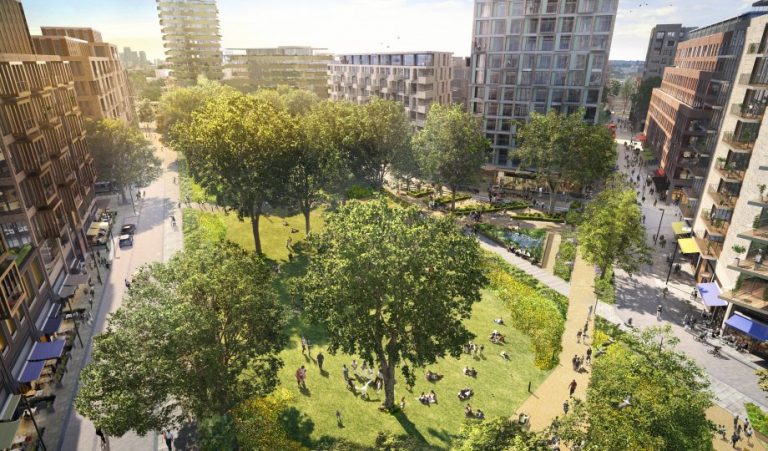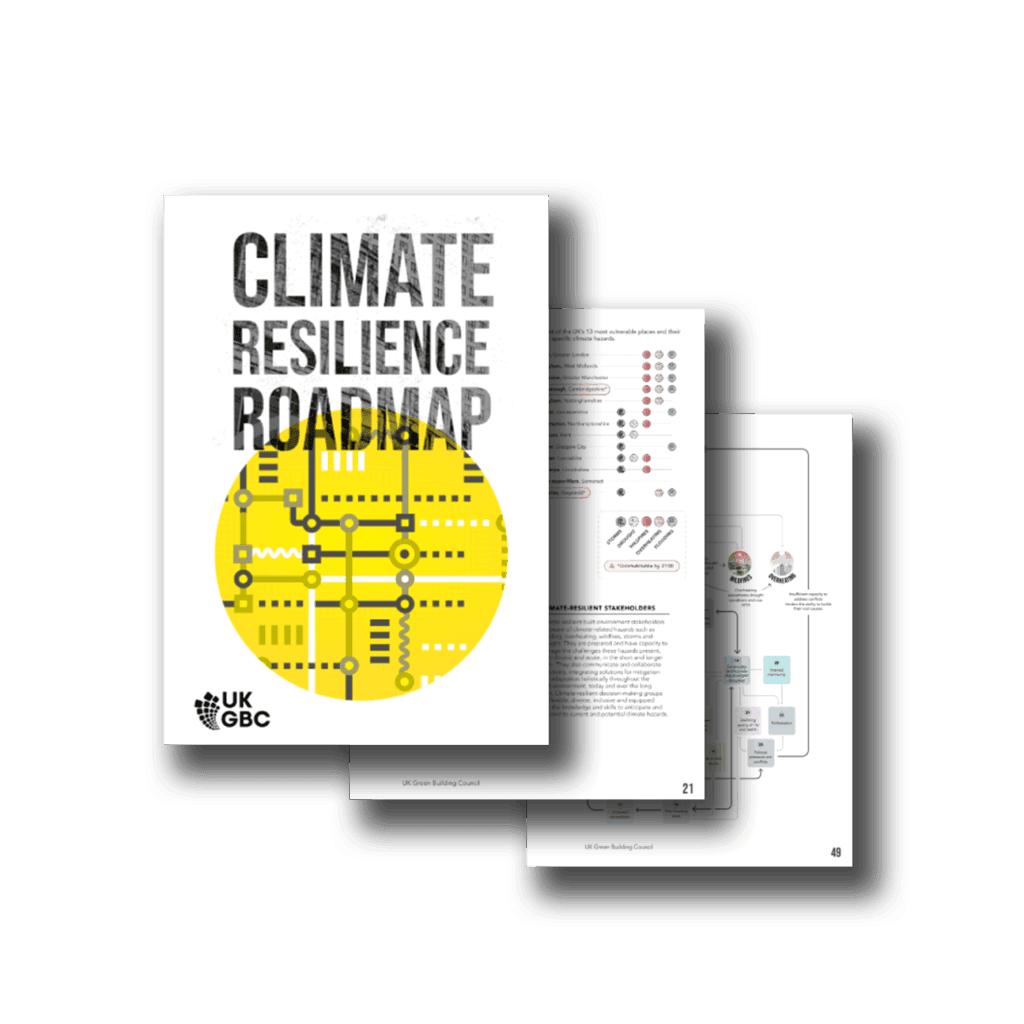Unveiling the Climate Risks: Voices from UK's Built Environment
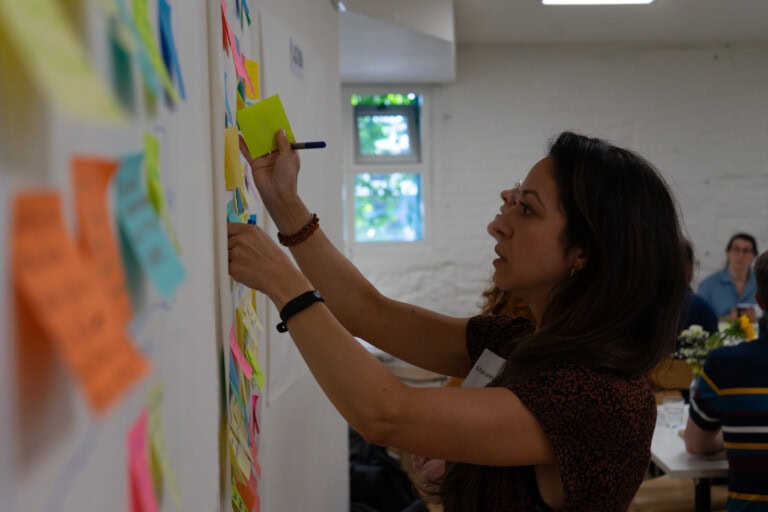
Over several months, we took a tour across different regions of the UK with a series of five Collaboration Cafés. Our mission? To dive deep into collaborative discussions with leading built environment organisations to learn about their understanding of climate resilience, define their perceptions of risks, needs, and consider their next actions. This blog collects observations, personal reflections and the rich insights gathered from these events, comprising over 800 pieces of information. We conducted both qualitative and quantitative analyses, spotlighting industry challenges and mapping the next moves.
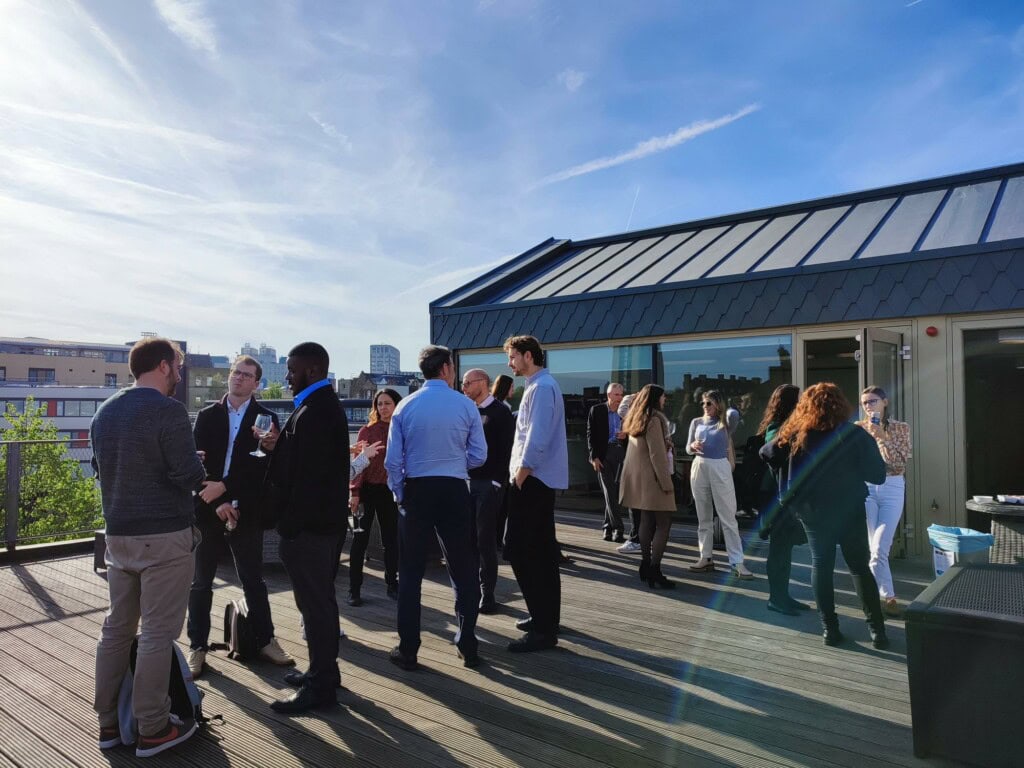
The cafe’s
As in the previous series of Race to Zero focussed Collaboration Cafes, this series is inspired by the World Café Method. Developed 30 years ago, this method enables us to bring different subsectors of the built environment together, to talk about the difficulties that are hard to share openly and the successes that we often ignore. The method supports insightful, collaborative and supportive knowledge sharing. Just like when we meet friends at a café.
We start with fun, tension-relieving ice breaking and matching people for cross pollination of ideas and organised networking. We ask them to write insights from the roundtables in post it notes, organise those in harvest walls for live mapping patterns and ask them to share the most profound insights gained from the events, while gently approaching the elephant in the room.
Voices of Knowledge
at the end of sessions, a common thought openly shared was “I realise I know more than I thought I did! What a relief”
The mix of voices at the cafes covered a wide range of subsectors in the built environment, from academic, to local authorities, sustainability experts to constructors, product manufacturers to architects and designers and multi-disciplinary consultants, to policy and industry-focused NGOs.
To understand our group, we sense checked how much the organisations attending knew about climate resilience. We asked people in the room to say if “they had no knowledge or heard of it”, “they had knowledge and taking action”, or “if they considered themselves as a guru on climate resilience”. Members said the level of knowledge they had was predominantly at the middle point at all five cafes – London, Bristol, Manchester, Birmingham and Glasgow. However, at the end of sessions, when we make a main harvest of insights, a common thought openly shared was “I realise I know more than I thought I did! What a relief”…
Insights from the cafe’s
What is climate resilience in the built environment for industry organisations
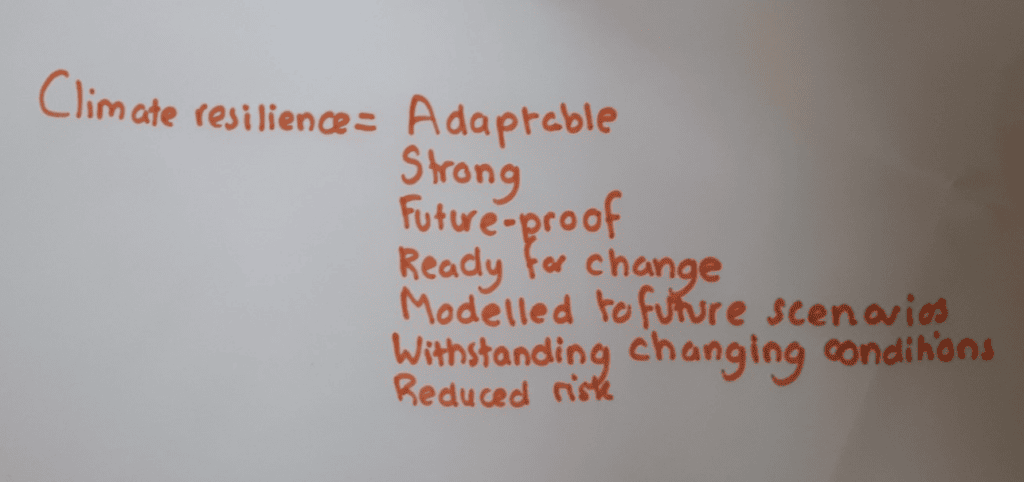
An image is better than a thousand words, here some pictures of the answer we’ve got:
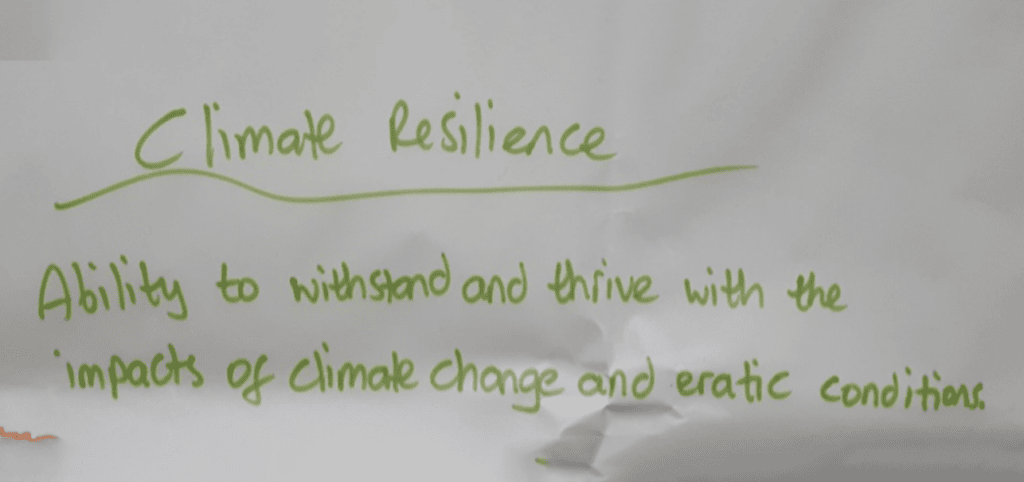
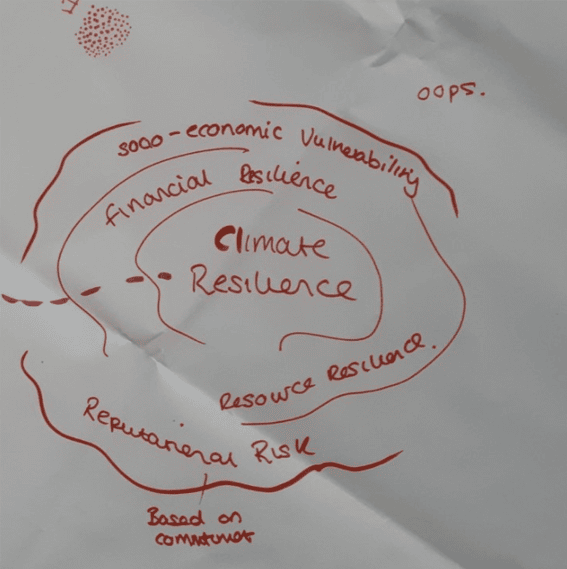
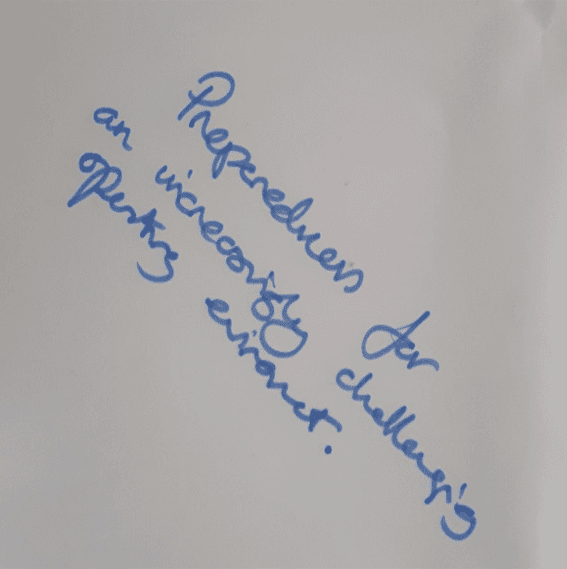
Did you notice the “oops”?…It may sound funny, but it’s also a very clear image: what falls out of climate resilience will ultimately mean that there is something to regret.
The risks of inaction
It is of course clear that action to implement climate resilience may not be as feasible, as fast or as a high priority as needed right now. Nevertheless, we have to make it priority.
There is a lot going on right now, there is a sense of rush and workloads heavier than what we can easily handle. The world, humanity and ecosystems are experiencing deep crises. It is of course clear that action to implement climate resilience may not be as feasible, as fast or as a high priority as needed right now. Nevertheless, we have to make it priority.
To make the point, we asked participants what inaction would mean for their organisation if it fails to implement resilience. We took those hundred insights and found some clear themes. The categories for the type of perceived risks were aligned to known frameworks (TCFD, IFRS), as well as new categories we’ve created (e.g. societal & environmental-related risk), following the values and guidelines we are looking at our Climate Resilience Roadmap project. The table below lists all the perspectives of perceived risks. Are there any there that surprise you?

| Risk themes mentioned | Higher level categories |
|---|---|
| – Business – Value Delivery – Business – Operational – Business – Value Proposition – Economic – Financial | Transition Risk – Market |
| – Policy & Legal | Transition Risk – Policy & Legal |
| – Reputation | Transition Risk – Reputation |
| – Business – ESD delivery | Transition Risk – Sustainability |
| – Resources – Human – Resources – Energy – Property/physical asset value – Supply chain | Physical Risk |
| – Health & Wellbeing – Social – Environment / Nature | Societal & Environmental related risk |
There are, of course, some differences found between the different locations where we hosted cafes.
There are, of course, some differences found between the different locations where we hosted cafes. While the findings depend on who attended these events and what the background and individual knowledge is of each attendee, the “cross pollination” effect from the method of the event give us an option to look at the results from a location perspective. Also, as other research has found, local culture can have a leading impact on how individuals approach sustainability (ref, and ref).
Have a look in the interactive visualisation below to see what each city, as well as the average, said about what the major perceived risks for them are.
If there was no limit to resources, knowledge or capacity, what would you ask to make climate resilience possible for the built environment? What would you say?
Needs from the Industry
If there was no limit to resources, knowledge or capacity, what would you ask to make climate resilience possible for the built environment? What would you say?
That wasn’t quite the question we posed, but we did ask what their organisation needed to achieve climate resilience in the built environment. In a similar method to how I described we used for the risks analysis, we looked at the answers to this question. These were the categories found in the table below.

| Needs mentioned | Categories |
|---|---|
| – Systems Change – Long-term Thinking – Systems Thinking – Stakeholder alignment (Buy in) – Collaboration – Culture – Personal drive / Leadership | Conceptual / Behavioural |
| – Awareness / Knowledge / Upskilling / Educating – Guidance / Standards / Frameworks | Conceptual / Behavioural and Practical / Technical |
| – Strategy – Targets / Goals – Innovation – Regulation / Legislation / Policy – Methods / Metrics – Finance / Investor Role – Financial – Data | Practical / Technical |
To me, conceptual and behavioural needs are as important as the practical and technical aspects of needs and therefore, capacity to act. It was particularly interesting to note the difference in what members said was most needed. See the visualisation below for their perspectives:
To me, conceptual and behavioural needs are as important as the practical and technical aspects of needs
There seem to be some distinctive needs for the industry. Do you agree?
What I can say right now is that we are working hard at engaging policy makers to support climate resilience in the built environment, we continue to engage and train leaders and the wider community to empower individuals to feel knowledgeable and take bold action, and we are definitely working hard to provide guidance, metrics, while encouraging stakeholder alignment and systemic change with the Climate Resilience Roadmap Project.

Action: where are industry organisations?
What is the key action your organisation could take to implement climate resilience in the built environment? What would be your answer?
We worked with the insights collected, and even though this is a very personal perspective, which will vary depending on multiple factors, this is what the overall members said would be their next step:
While there are several caveats to these results, this image is confirming that our members are at different levels of action and are indeed aware. It also shows that industry organisations are adopting a systemic view, embracing collaboration and knowledge sharing, which are crucial for the industry’s collective and convergent climate resilience action.
Hearts and minds for action
In the mind, love is a concept. In the heart, love is an action.”
John-Roger, DSS
I’m feeling encouraged. Facilitating these events, witnessing the industry’s passion, and analysing the data myself have reassured me that we’re on the right path. It’s clear that, collectively, we have what it takes to keep moving forward.
The main takeaways, similar to our previous series, are that we often feel shy to acknowledge our knowledge or intuition, hindering our progress on critical issues like climate change. Everyone is at a different stage—individuals and organisations alike. But as a collective, we’re in the right place and ready. Besides, isn’t passion one of the most basic yet powerful tools for success?
Lastly, it’s great to come back to think about the reasons we have to continue using the café method for these events. It’s because real action happens when the mind (knowledge) and the heart (feelings) come together. And that’s what we’re all here for.
Let’s get to action.
Want to learn more about Climate Resilience with UKGBC? You can catch up with the latest on our Climate Resilience Roadmap here or join us for a short course on Climate Resilience here.
Related
Building Resilience: Climate Change Modelling and Risk Assessments
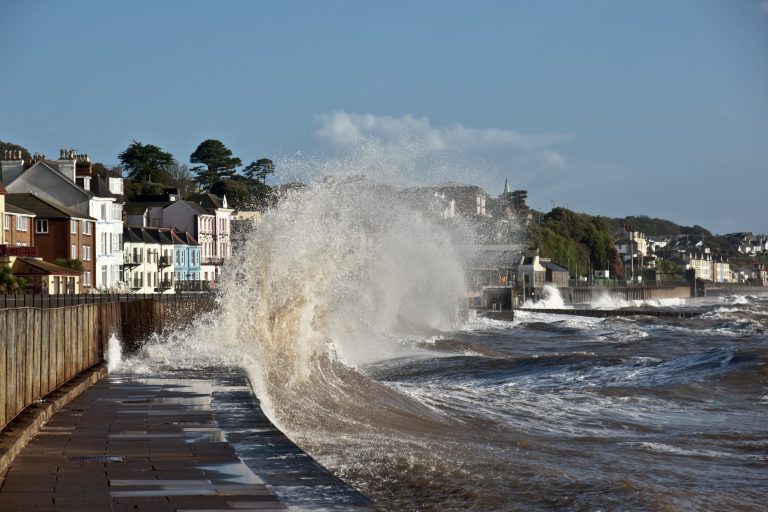
What is it like to measure the physical risk of built assets?
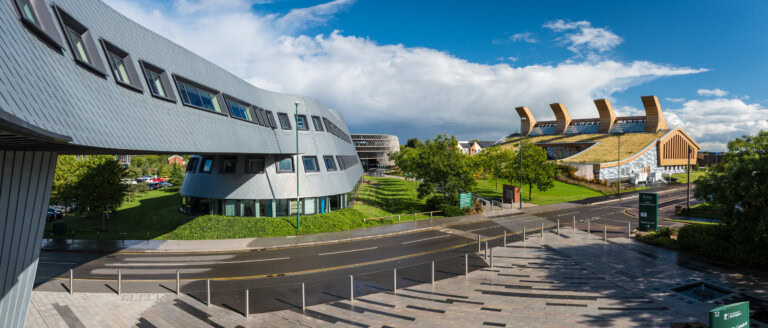
What is the difference between physical climate risk and transition climate risk?

How the urban heat island effect makes cities vulnerable to climate change


